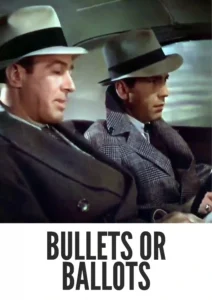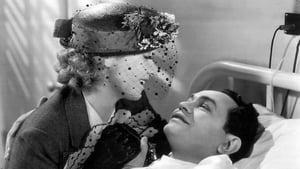Video Sources 0 Views
- Watch trailer
- Bullets or Ballots 1936 Colorized


Synopsis
Table of Contents
ToggleGangsters, Mobs, and Undercover Cops: Bullets or Ballots (1936) in Vivid Color

Dive into the dark and dangerous world of 1930s crime with Bullets or Ballots, a gripping gangster film from 1936, now vividly colorized for a modern viewing experience. This movie, also known as Under Fire, showcases a thrilling narrative of corruption, betrayal, and justice. Perfect for fans of classic crime dramas and those fascinated by the era of mobsters and G-men, this HD download brings a timeless piece of cinematic history to your screen.
Bullets or Ballots Storyline: A City Under Siege
Bullets or Ballots plunges into a city controlled by ruthless gangsters, where the law seems powerless against the tide of corruption. Johnny Blake (Edward G. Robinson), a tough and seasoned detective, is forced out of the police force due to his uncompromising methods. However, his reputation precedes him, and he’s soon recruited by a citizens’ committee determined to break the mob’s stranglehold on the city.To infiltrate the criminal organization, Blake seemingly turns rogue, earning the trust of mob boss Al Kruger (Barton MacLane) and his ambitious right-hand man, Nick Fenner (Humphrey Bogart). As Blake rises through the ranks, he gathers crucial evidence to expose the mob’s operations and bring them to justice. A tense and dangerous game unfolds, filled with double-crosses, shootouts, and the constant threat of exposure. Bullets or Ballots is a thrilling ride that explores themes of morality, loyalty, and the price of fighting for what’s right.
Movie Cast
The film boasts a stellar cast of actors who bring this gripping story to life:
- Edward G. Robinson as Johnny Blake
- Joan Blondell as Lee Morgan
- Humphrey Bogart as Nick “Bugs” Fenner
- Barton MacLane as Al Kruger
- Frank McHugh as Jojo
Movie Genre
Bullets or Ballots falls squarely into the gangster crime drama genre, delivering a potent mix of action, suspense, and social commentary. Its depiction of organized crime and the fight against it reflects the concerns and anxieties of the 1930s.
Historical Context: The Golden Age of Gangster Films
Released in 1936, Bullets or Ballots arrived during the height of the gangster film craze in Hollywood. These movies often reflected the social and economic upheavals of the Great Depression, offering audiences a thrilling escape into a world of danger and excitement. Bullets or Ballots stands out for its compelling characters, sharp dialogue, and its exploration of the complex relationship between law enforcement and organized crime.
Colorization Details
This colorized version of Bullets or Ballots has been carefully restored using advanced digital techniques, enhancing the visual impact while preserving the film’s original atmosphere. The colorization process involved meticulous analysis of the original black and white footage, with colors chosen to reflect the mood and setting of each scene. This painstaking process brings new depth and vibrancy to the characters and environments, making the story even more immersive for today’s viewers. While the choice to colorize classic films can be debated, it introduces them to a wider audience, ensuring their preservation for future generations.
Technical Details
- Director: William Keighley
- Screenplay: Seton I. Miller
- Story: Martin Mooney, John Wexley
- Cinematography: Hal Mohr
- Edited by: Jack Killifer
- Production Company: Warner Bros.
- Distributed by: Warner Bros.
- Runtime: 81 minutes
Technical Specifications
- Download Format: MP4
- Resolution: HD (1080p)
- Compatibility: Compatible with most devices, including smartphones, tablets, computers, and smart TVs.
Reviews and Critical Reception
Bullets or Ballots (1936) is a highly regarded entry in the gangster film genre, praised for its fast-paced plot, strong performances, and its realistic depiction of crime and corruption. Edward G. Robinson’s portrayal of Johnny Blake is particularly memorable, and Humphrey Bogart delivers a standout performance as the ruthless Nick Fenner. The film remains a compelling and entertaining example of classic Hollywood filmmaking.
FAQs
- Q: What is Bullets or Ballots about?
- A: Bullets or Ballots is a crime drama about an undercover cop who infiltrates a powerful mob.
- Q: Is Bullets or Ballots (1936) considered a classic gangster film?
- A: Yes, Bullets or Ballots is a well-regarded example of the gangster film genre.
- Q: Is this version of Bullets or Ballots colorized?
- A: Yes, this version has been professionally colorized to enhance the viewing experience.
- Q: What makes Bullets or Ballots interesting for film fans?
- A: Bullets or Ballots features a compelling story, strong performances, and a realistic depiction of crime.
- Q: What is the download format?
- A: The download format is MP4, which is compatible with most devices.
- Q: What resolution is the download?
- A: The resolution is HD (1080p), providing a high-quality viewing experience.
Download Now in HD!
Watch Bullets or Ballots Today!













